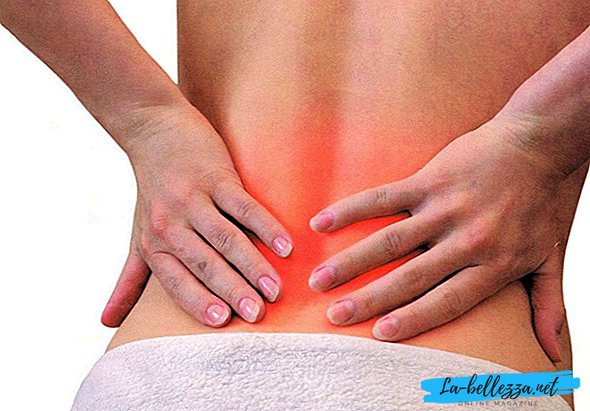
A stroke is a serious disease that develops due to circulatory disorders in the brain cells (clogging of an artery, arterial spasm, etc.). Consider in more detail the first signs of a stroke in men and methods of treating this ailment.
Stroke in men: causes
With a stroke in men, blood stops flowing into the vessels of the brain, which leads to oxygen starvation of one of the areas of the brain. As a result, without proper nutrition, the cells simply die. If a person in this condition does not provide timely medical assistance, then he may lose some body functions.
There are two types of strokes in men: ischemic and hemorrhagic.
Causes of Ischemic Strokethat develops rather slowly, the following:
1. Hemorrhage in the brain tissue.
2. The narrowing of the vascular walls in the brain.
3. Deformation of the vascular walls in the brain.
4. Clogging of cerebral arteries.
5. Circulatory disorders in some parts of the brain.
Hemorrhagic stroke in men occurs for the following reasons:
1. Brain injury, which led to rupture of blood vessels.
2. Strong psycho-emotional overstrain or excessive physical activity.
Moreover, predisposing factors the development of this disease in men are:
1. Overweight.
2. The old age of men.
3. Gender (strokes are more common in men than in women).
4. Smoking.
5. Alcohol addiction (increases the risk of stroke several times).
6. An insufficiently mobile lifestyle without physical activity.
7. A person’s genetic predisposition to vascular disease and stroke.
8. Permanent nerve stress and stress.
9. Lack of timely treatment of vascular diseases and endocrine pathologies.
10. Elevated blood cholesterol.
11. Improper nutrition.
12. Diabetes mellitus.
13. The presence of severe cardiovascular disease.
14. Addiction.
15. Recently transferred operations.
Stroke in men: first symptoms
The following are distinguished first signs of a stroke in men:
1. Great weakness.
2. Numbness of the fingers.
3. Nausea, which appeared, at first glance, for no apparent reason.
4. Frequent headaches without clear localization.
5. Noises in the head.
6. Dizziness.
7. Visual impairment.
8. Speech impairment.
9. Sudden migraine.
10. Shortness of breath.
11. Violation of coordination of movement.
12. Numbness of one part of the body.
In addition to this, it is important to know that each form of stroke may have slightly different symptoms.
In this way, hemorrhagic stroke causes the following additional symptoms and appearances:
1. Violation of the patient’s heart rhythm (severe tachycardia or arrhythmia).
2. Soreness in the eyes.
3. Loss of consciousness.
4. Cramps.
5. Shortness of breath.
6. Pallor or acquisition of a crimson face.
7. Sharp headaches.
8. Breathing with wheezing.
9. Paralysis of the limbs in a patient.
Signs of the development of ischemic stroke are:
1. The violation of human perception of reality.
2. Speech impairment (it is difficult for the patient to speak, he partially loses the ability to pronounce words).
3. Fuzzy speech.
4. The appearance of asymmetry of the facial muscles.
5. Partial numbness of the face.
6. Blurred vision.
7. Hearing impairment.
8. Rapid pulse.
9. Fever.
10. Jumps in blood pressure.
11. Intense sweating.
12. Difficulty swallowing.
13. Slow reaction to irritants.
It is important to know that if in a few hours these signs completely disappear, then you should still consult a doctor. Most likely, it was a microstroke, which could soon develop into a real stroke. For this reason, you cannot postpone a visit to the doctor, especially in this condition.
Stroke in men: diagnosis and treatment
For the initial diagnosis of stroke, the following tests are performed:
1. It is necessary to ask the patient to raise his hands. If he raises only one arm and the other is weak, it means that half his body is hurt.
2. Ask the patient to smile. With a stroke, the smile will turn out asymmetric, not natural.
3. Talk with the patient. With a stroke, speech will be fuzzy, it will be difficult for the patient to talk.
Traditional stroke therapy involves the following:
1. A patient with stroke symptoms should be hospitalized as soon as possible.
2. If less than six hours have passed from the moment of the development of the disease, then the patient is prescribed antithrombotic therapy.
3. When a hemorrhagic stroke is detected, an operation is sometimes performed to extract the formed hematoma.
4. To normalize blood circulation in the brain, the following drugs are prescribed: Aspirin, Noopet, Heparin, Agapurin, etc. Their selection is carried out by the attending physician in each individual case. At the same time, it is important to know that self-administration of drugs or their cancellation can lead to a deterioration in human health.
Separately, it is worth mentioning the need for therapeutic exercises. It must be started just a few days after a stroke, so that you can not start the patient's condition. This is especially true for passive movements with paralyzed limbs. Such gymnastics will help to avoid inflammation in the affected joints and will contribute to the appearance of sensitivity. The load should be gradual, with dosed motor activity.
Also, if the patient has speech disorders, then he needs to conduct classes with a speech therapist.
Usually, the rehabilitation period after a stroke lasts quite a long time, especially if a large part of the brain has been affected. In this case, it is very important not to lose time in the first six months, since they are considered the most favorable for the restoration of lost body functions.
Additional tips for recovering from a stroke in men provide for this:
1. The mattress for the patient should be hard. If at the same time a person has lost the ability to control his physiological needs, then he needs to use special diapers for adults.
2. The room in which the patient is located should often be ventilated and be bright. You also need to do wet cleaning regularly.
3. If the patient is lying, then he definitely needs to do special breathing exercises so that he supports the normal functioning of the respiratory system.
4. It is important to provide a person with proper nutrition. It is recommended to follow a diet with a minimum of fat and salt.
5. The patient's blood pressure should be monitored.
Stroke in men: complications and prevention
Unfortunately, in the absence of timely treatment for stroke can cause dangerous complicationsAmong which may be:
1. Total or partial loss of mobility.
2. Loss of vision or hearing.
3. The development of dangerous diseases of the cardiovascular system.
4. Coma.
5. Serious speech disorders that can no longer be recovered.
6. Impaired memory and mental abilities of the patient.
7. Epilepsy.
8. Violation of urination.
9. Lack of coordination of movements.
10. Violation of human perception.
11. Fatal outcome of the patient.
12. Various peripheral neuropathic disorders.
To reduce your risk of stroke, Men must adhere to the following doctor's recommendations:
1. Refuse bad habits (smoking, drinking).
2. Normalize body weight.
3. Monitor blood pressure.
4. Timely treat any cardiovascular disease, as well as pathology of the endocrine system.
5. Monitor blood cholesterol.
6. Lead an active lifestyle (play sports).
7. Eat right. The diet should consist mainly of plant-derived products, as animal fats help increase cholesterol, which in turn increases the risk of clogging of blood vessels.
8. Visit your doctor regularly for a routine checkup.
9. If the first signs of a stroke occur, you need to be examined as soon as possible.
10. Avoid severe stress and psycho-emotional overstrain.
11. Avoid excessive physical exertion.
Unfortunately, one cannot insure oneself from head injuries and accidents, therefore it is recommended that men only be extremely careful.
Today, stroke occupies a leading place among the causes of death in men aged forty to sixty years. For this reason, it is worth taking this disease very seriously and observing all medical advice.











